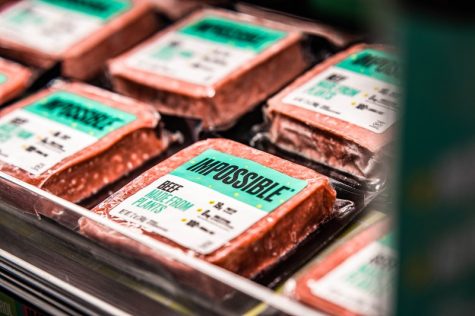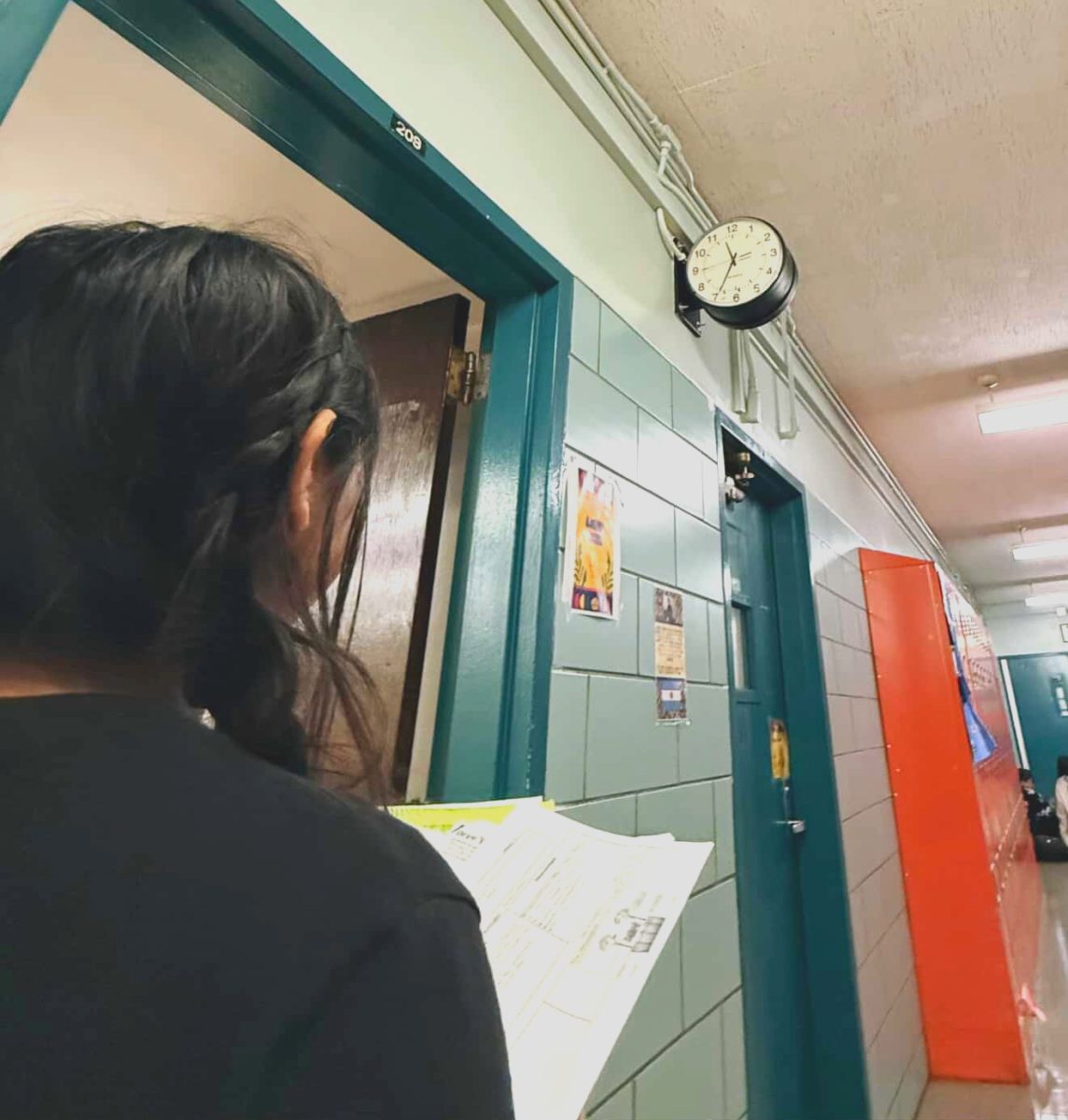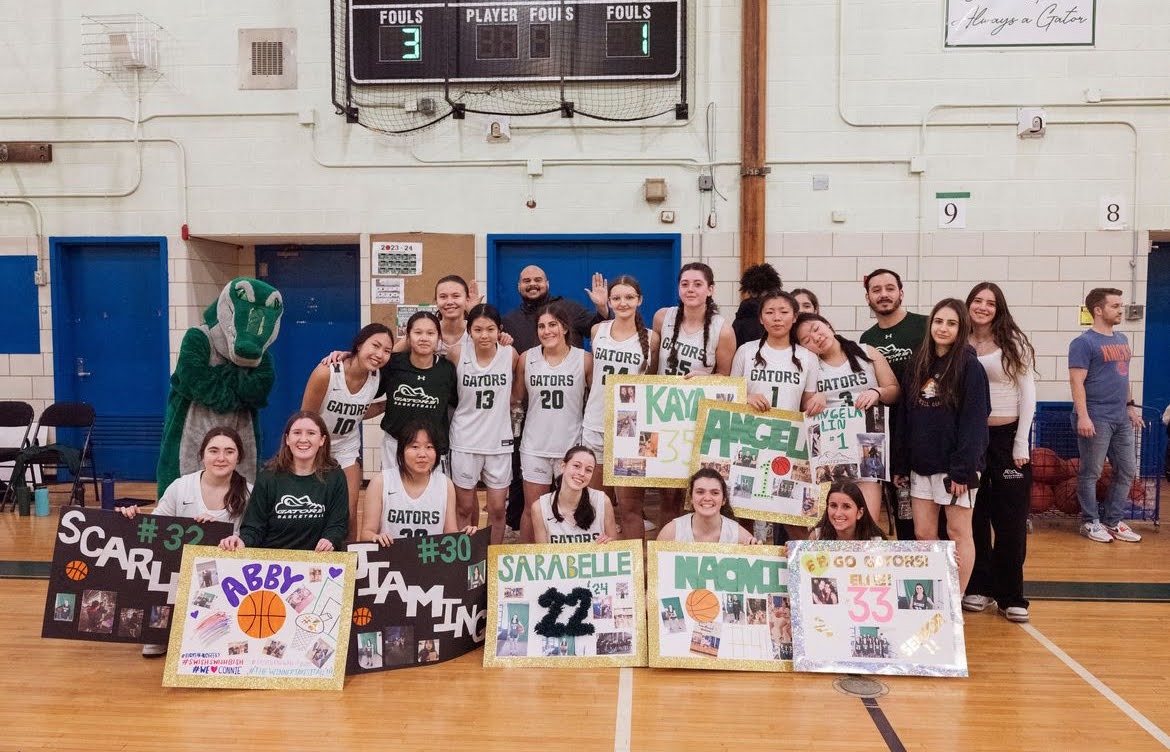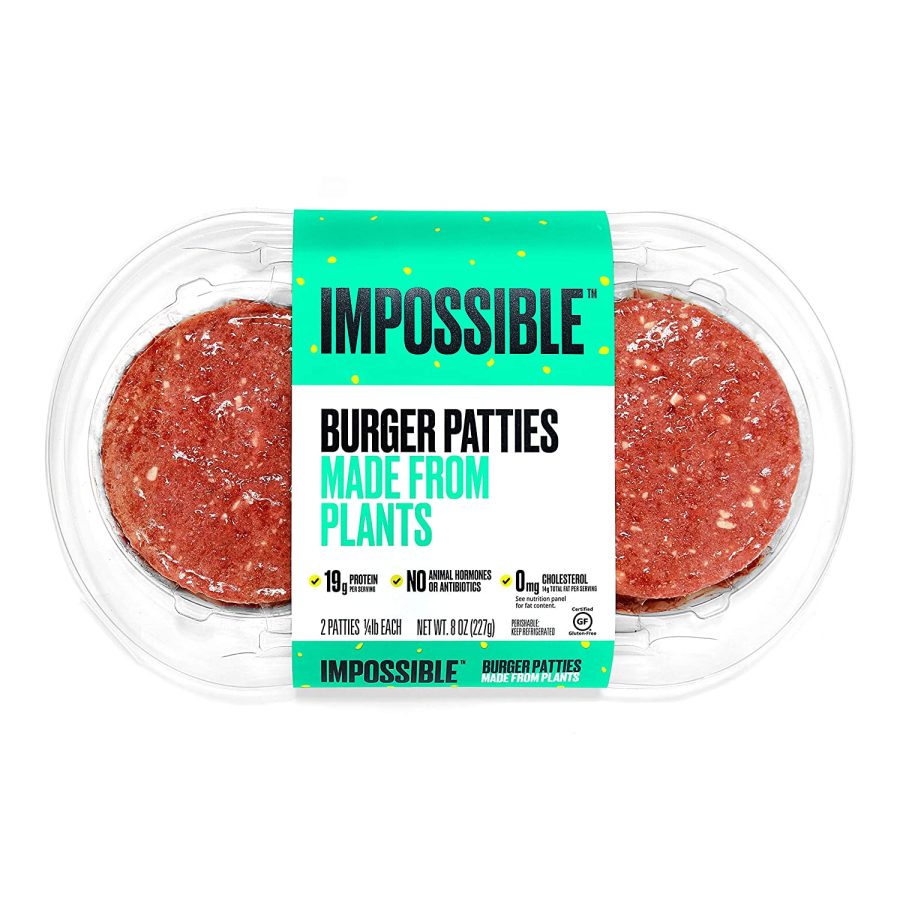The Synthetic Food Revolution
April 4, 2022
The first homo sapiens roamed the Earth hundreds of thousands of years ago; surviving in 2022 is very different than in 200,000 BCE. As a species, we no longer need to outrun predators or climb trees, but there is one thing that we modern-day humans share with our ancestors: our reliance on Earth’s resources. Granted, humans could not survive without food or water, but whether we use these resources sustainably has been called into question.
Meat and animal products have been a regular part of the human diet since the prehistoric eras. However, in recent years, circa 1950s, the production industry has started harming our planet. Whether by the greenhouse gas emissions created by farming machinery, or land disturbances and erosion, scientists have recognized that a new alternative would be beneficial. The growing population, expected to increase to over nine billion by 2050, would require around 50% to 73% more meat than what is being produced now. The environmental effects would be detrimental if said targets were met with our current production technology.
Students at the NYC Museum School have the option to take AP Environmental Science. The course covers anthropogenic impacts on our planet and goes in depth on the effects of the meat industry. Current 10th Grade AP Environmental Science student Alexa Rodriguez said, “The way that animals are treated is horrendous. They are kept in unsanitary conditions, and are consolidated to the point where they cannot even move.” As the generation that has to essentially fix the problems our predecessors have caused, there is a pressure to act fast and invest in renewable resources. Rodriguez added that the current state worries her, “because soon the impact will be irreversible. This isn’t a sustainable way of consuming and eating because it is causing extreme climate change, affecting our animals and habitat.”
One potential solution has arisen in the form of synthetic foods. This so-called “revolution” has introduced the world to lab-curated products that replicate meat characteristics using animal stem cells and plant-based materials. These substitutes are realistic, and come without the occasional deal-breaking toll of killing an animal. The pros of choosing substitutes over real meat from an environmental standpoint, are that they produce 90% fewer greenhouse gasses than animal products. Also, open land is spared during the lab process, which can become a carbon sink over time which helps absorb the excess gases in our atmosphere.
Brands like Beyond Meat, Impossible Foods, and Morning Star Farms, have been successful in blending their products into the meat market. According to Impossible Foods, “The U.S. market for plant-based meat is projected to reach around $15 billion by 2025 and [Impossible Foods] sales are forecasted to grow 40% annually.” Due to the popularity among consumers, production costs dropped, allowing for the same Impossible Burger to cost $4.50 per pound in 2019 versus $3.50 per pound in 2020.

Despite the growing interest, one challenge the synthetic food industry faces is that not all people recognize climate change. Only 57% of Americans believe that anthropogenic activities are causing the crisis. This poses a challenge for alternative food companies, as a large portion of their marketing addresses how their products are sustainable solutions.
Additionally, while costs are dropping, fake meats are still much more expensive in comparison to poultry and regular beef. This is not to say that synthetic foods can never adapt to the small-scale, rural lifestyle. 2020 trends show that lab-grown foods are reaching their expected peak, but will eventually see a decrease in overall interest. However, this phase is normally temporary. Like all new and radical products, they are first seen as only a fun meal to try once or twice, not a classic staple. Although, once the product is a few years older and commonplace, it is probable that lab-grown foods will reach acceptance from consumers, due to the continuous modernization of society and the urgency among many to fix the climate crisis.
Is this revolution ongoing? Yes. Will it peak in the coming years? Probably not. The success of the synthetic meat industry thus far has proven that ‘fake’ food is here to stay. However, it is nowhere near surpassing the meat industry or taking over our diets. The technology required to mass-produce plant-based food for the entire population is unattainable. Despite the changes in our Earth’s climate, and the upwards trend of carbon emissions, it may be a while before the general public fully accepts the climate crisis and integrates plant-based products into their daily lives.




























Scarlett • Apr 7, 2022 at 8:49 pm
are you saying we should all go vegeterian? How did all this happen right under my nose, so interesting make more!